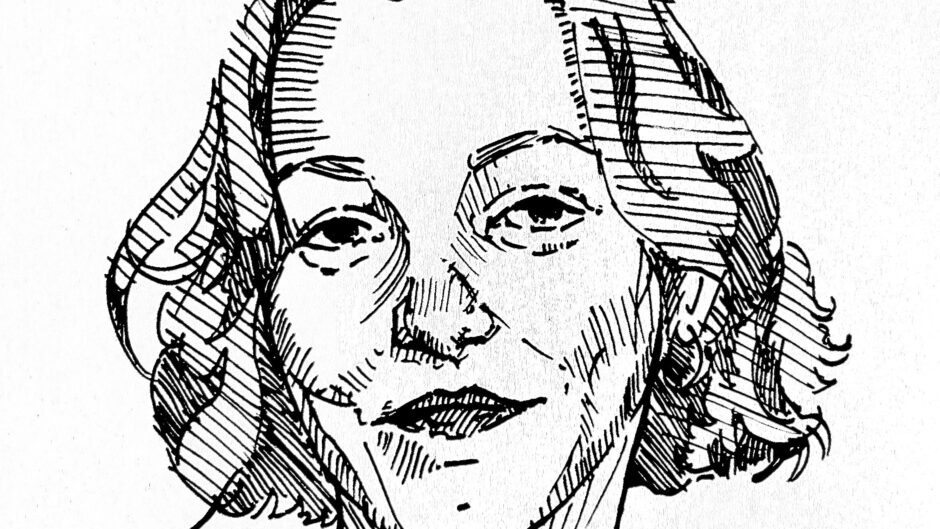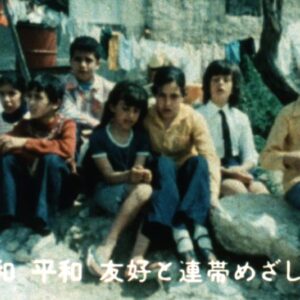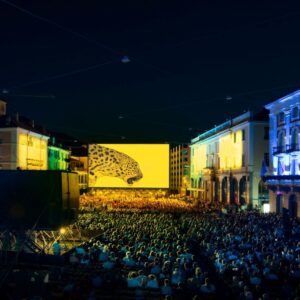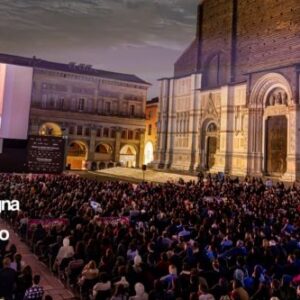
The award-winning feature film debut by Lisa Gertsch ELECTRIC FIELDS is coming to the Swiss cinemas on the 20th of June. The film shows in an episodic narration the unspoken fine prints that exists within and between people. Blurring the lines of reality and fantasy ELECTRIC FIELDS invites us into a universe full of longing. Loved by critics, praising the film for its maturity, Filmstelle met Lisa to get to know how such a film comes into the making.
ELECTRIC FIELDS is an unconventional film. How do you convince people to trust your creative vision?
To me it was helpful to simply talk about the project. And for this film I started working with people I’ve already worked with. Otherwise, I think the script needs to incite interest within the actors. And especially for the more well-known actors, who are familiar with bigger sets, wanted to try something more intimate. In this film the crew only consisted of three people. During the process I didn’t know exactly where the story was heading to and that was also an aspect some of the actors found intriguing.
With such a small crew, how were you able to accomplish a smooth process?
We tried to use available light as much as possible. And then we also tried to find locations that were pretty much equipped with everything we needed and already had the look I envisioned. The costumes we got at costume stores, and I just did a lot of production-related work.
How does a low budget film like ELECTRIC FIELDS shape the filmmaking process?
It sets boundaries, which I found pleasant in this case, except for the fact that you can’t pay the people the way you would like to. I think this is the biggest disadvantage of it. But sometimes it’s nice when you know you have to tell a story within the means you’re given, and you have to figure out how. That helps me. I didn’t have a lot of time or money and I wanted to do it now. And through that, a certain kind of energy developed that made the movie possible.
In an interview after you had just received your award at the Max Ophüls festival, you stated that you now know what kind of movie you would like to make. Could you elaborate on that?
There are a lot of aspects that I would like to take with me for my next project. If there is more money in a project, I would like to build a structure that allows me to be able to still focus on my creative vision and the actors. I don’t think that this film would have received any funding. Questions like “do people even understand this”, “is it not too vague” and “is it not too fragmented” would have been raised. But now it also shows that still good projects can emerge.
ELECTRIC FIELDS is in its manner slow-paced and leaves a lot of space for the characters to really unfold their emotions in very subtle ways. How could you still build and keep a certain tension?
Fortunately, the concept of the episodic narration lets you know that something will happen. In the first episode something unexpected happens pretty much in the beginning. And in the second episode when something unexpected happens again, you as a viewer get the rule. So, this moment of unexpectancy gets pushed back for each episode further back and the viewer is waiting for that moment to happen. In this way I got enough space to observe the characters.
Space seems to be an important element in your filmmaking. In a lot of interviews, you speak about a narrative openness. What exactly does that mean and why is this important to you?
For example there is no answer to why something happens. I think one of the episodes of ELECTRIC FIELDS describes that quite well. The characters destroy something because they don’t understand it. And that’s exactly what I don’t want to do to this film. I don’t want to destroy it by having to explain it. Sometimes it’s tempting to do so but for this film I tried to leave it as open as possible.
Looking back, how did the making of ELECTRIC FIELDS influence you on a personal level?
The fact that this film exists at all makes me really proud. It kind of came from nothing. I cannot imagine not having this crazy idea of making this film. I’m just really happy that this resulted in something I truly love.
How was the editing process?
Back in the days I used to edit a lot of films, so it came naturally to me. For this film I had no other option anyways. But the process was that I edited each episode as soon as we were done with shooting one. So that means after the last day of the shoot, I already had a rough cut of the film. It was really interesting to add all the episodes together and seeing them become one film. I was really nervous about that because I didn’t know how the film would come across in the end. But it worked and I could spot new connections between the episodes that I hadn’t noticed before.
And the order of the episodes were fixed from the beginning on?
No, because I didn’t even know what the episodes would be like. I just wrote an episode, filmed that episode and then continued with the next idea. And this process was across one and a half years.
So the number of the episode was also not planned?
No, I just wanted to see how many ideas I had. And somewhere along the line I knew when to stop.
How does one know when the right moment has come to stop?
There is something unexpected happening in each episode. And in the first episode it is very visual and in the second as well. After this point the unexpected becomes increasing subliminal. In the last episode the unexpected happens in the last shot and at this point it couldn’t be more subliminal. And then it just can’t continue. At this point it was clear to me that this was the last episode.
In the film appears an ever-glowing light bulb that lights on its own. You built this yourself. How did you do that?
Ah, that’s so nice. It’s the first time that someone asks me this question. And I’m really happy that you asked because I’m really proud of this light bulb (laughs). I wrote that episode and wanted to buy such a light bulb, which of course doesn’t exist. And then over several weeks I needed to figure out how to build this. The solution was to saw off the bottom part of the bulb. I then took out all the stuff that was inside, without breaking the bulb. Two LED lights were attached to a battery. Then I put it into the bulb and glued it shut.
By Kim Spieser



